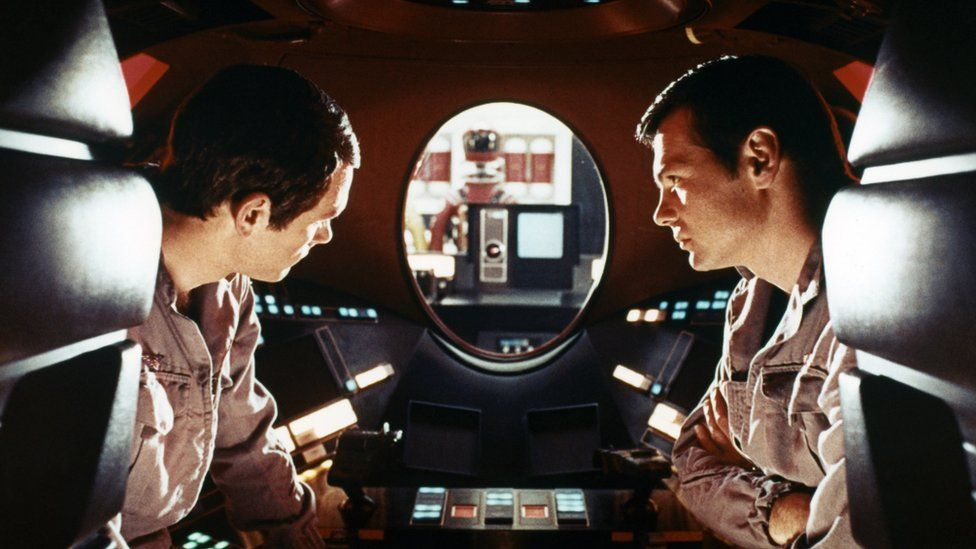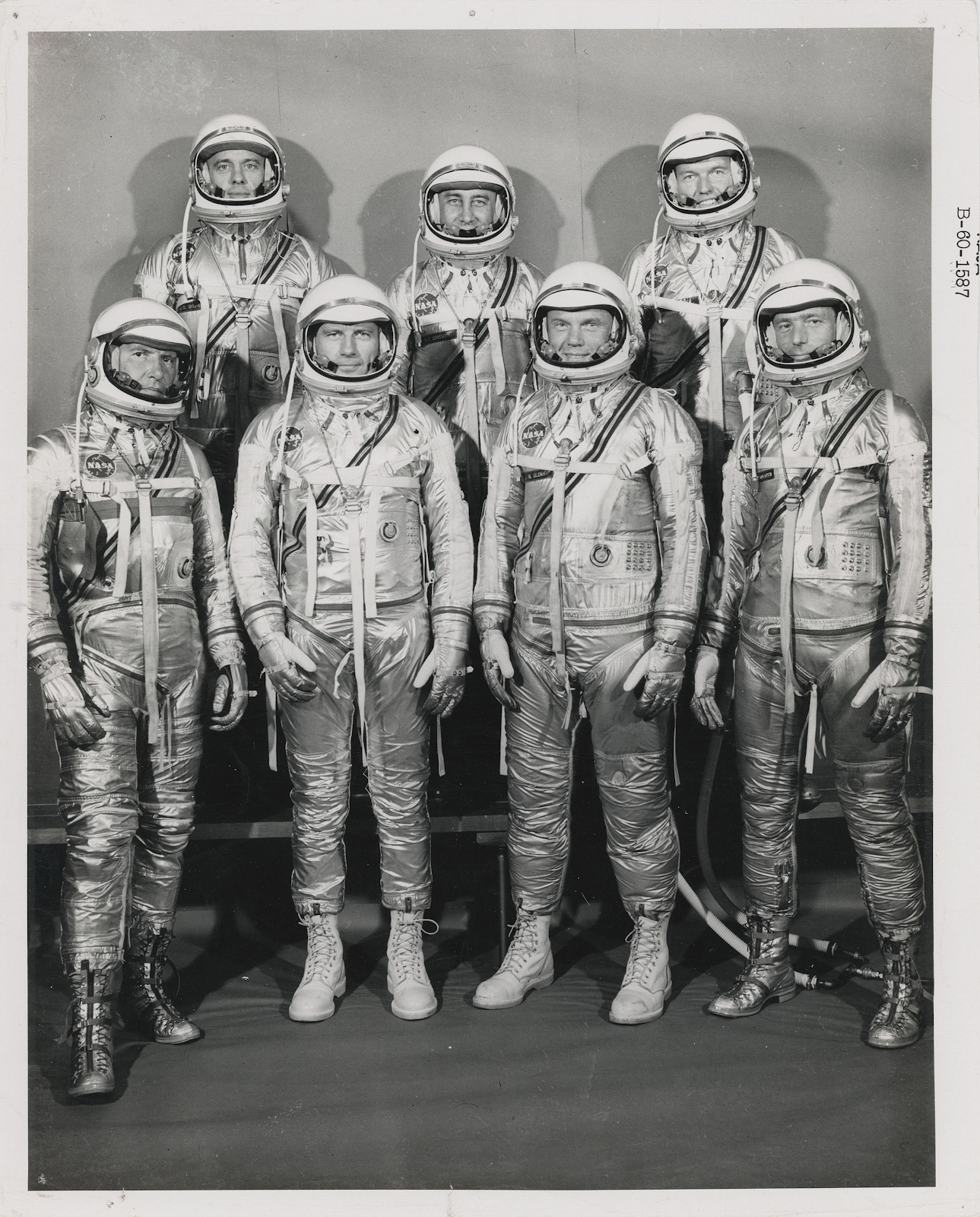HUMANITIES 499.1001
HAL
“Just what do you think you’re doing, Dave?” This iconic phrase from Stanley Kubrick’s film 2001, A Space Odyssey ushered in the new millennium way back in 1968. It became a stark warning for the world as it accelerated into yet another technological revolution. Although Earth never made it to Jupiter by the turn of the century, virtually it went far and beyond into another frontier, cyberspace. The question now is, what lies out there? Like the universe itself, are there no boundaries or are there terrifying limits such as black holes and event horizons? This is a great problem not just for the 21st Century, but for civilization itself. Beyond the problem is a greater one, how does man shut technology down when, and if, it comes to that?
Consensus of opinion is in order to write a convincing essay one must first state a thesis, then find evidence to back it up. What if something else surfaces while the search for evidence is underway? For instance, a thesis is stated:
“What is the problem of the 21st Century, and what do we do about it?”
Let’s say the problem of the 21st Century is, as in the opening paragraph, “HAL,” the “Heuristically programmed ALgorithmic computer.” The psychotic computer represents runaway technology of the new millennium and has to be terminated, how to go about it? Given a set of primary sources to first, define the problem and second, define the solution, is the assignment. However, if all the primary sources were written in the wrong “codified language,” which defines the problem as social or philosophical such as racial or political in context, the evidence will not support the thesis. Controls on investigation are limited by the fact that the given primary sources are broken down chronologically into four groups and analysis can only be made by drawing evidence from two to four sources in each group. The objective, therefore, is to find in the sources evidence contrary to conclusions normally drawn from the text, in other words, the consensus of opinion.
The following primary source ranges are considered:
Group 1: Pre-colonial to 1855 (pre-Industrial Revolution);
Group 2: Antebellum to 1899 (Industrial Revolution);
Group 3: 1900-1939 (post-Industrial Revolution)
Group 4: 1940-present (The Technological Revolution).
In each group it will be necessary to extract evidence that runs contrary to the accepted value of the context as to what it represents.
Beginning with the first group, in the account of A True History of the Captivity and Restoration of Mrs. Mary Rowlandson, published in 1682, Mary refers in the “Eighth Remove” to one of her duties in captivity:
“During my abode in this place Philip spake to me to make a shirt for his boy...and afterwards I made a cap for his boy...There was a squaw who spake to me to make a shirt for her Sannup...another asked me to knit a pair of stockings.” (Rowlandson, 23)
Common interpretation of the autobiography is that Mary Rowlandson had it tough at the hands of whom she referred to as “savages.” Completely overlooked is what she did, she sewed and knitted, why? Because it would be ninety years before the invention of the spinning-jenny. What has knitting to do with a computer running amok 300 years later? It’s in the anticipation of technology, and the lack of it, written clearly into the text.
Next, in 1744, the Onondaga chief Canassatego delivered his Speech at the Treaty of Lancaster in which he stated:
“It is true that above one hundred years ago the Dutch came here in a ship and brought with them several goods, such as awls, knives, hatchets, guns…” (Canassatego, 29)
The conclusion drawn from the speech is that the Indians were treated unfairly, their land stolen through dubious charters and an offer to send the tribes’ children to settlers’ schools rejected in favor of swapping settler kids into tribal culture. What’s missing is the acquisition of technology by the Iroquois Confederacy in the form of awls, knives, hatchets and guns. The foundation for the advance of technology in the New World is clearly visible in the speech by Canassatego.
The cotton crisis was mentioned in Correspondence Between Karl Marx and Abraham Lincoln, dated January 28, 1865 and included in Group 2: Antebellum to 1899. In the early 1800’s the cotton gin invented by Eli Whitney placed unreasonable demands on the South to produce the crop, as noted in the Eric Vanhaute report titled The European subsistence crisis of 1845-1850: a comparative perspective: (external document)
“‘The Commercial Crisis of 1847’, which claims that in Britain in 1847 the downturn in production applied only to cotton, and that this was due to an exogenous factor - the shortage of raw cotton in the U.S. South.” (Vanhaute, 2)
Directly related to pressure on the South was the rise of territories in the immediate west and the desire to expand slavery into the regions for the further development of the cotton crop. Marx was keen to observe the demand for labor and crop in his letter to Lincoln:
“The contest for the territories which opened the dire epopee, was it not to decide whether the virgin soil of immense tracts should be wedded to the labor of the emigrant or prostituted by the tramp of the slave driver?” (Marx, 1)
The expansion of the slave market as a result of the cotton gin gave birth to the early days of the Industrial Revolution creating a series of on again, off again monetary crises leading up to the Civil War. Combined with the telegraph and railroads, technology was a runaway freight train that pushed to all corners of the continent, as noted by Simon Pokagon in The Red Man’s Greeting:
“A crippled gray-haired sire told his tribe that in the visions of the night he was lifted high above the earth, and in great wonder beheld a vast spider-web spread out over the land from the Atlantic Ocean toward the setting sun.”
Once again, there is the anticipation of technology prophecy as seen in Rowlandson, continuing:
“It’s network was made of rods of iron; along its lines in all directions rushed monstrous spiders, greater in strength, and larger far than any beast of earth. Clad in brass and iron, dragging after them long rows of wigwams…” (Pokagon, 146)
Pokagon compared the old man’s dream to the extensive network of railroads that had sprung up as the nation expanded west toward the Pacific, and 25 years had already passed since he wrote Red Man and the spike was driven that connected the two oceans.
By the turn of the century, the question of what would become a major concern for America wasn’t what it would be, but how to manage it. Due to the rise of the assembly line, emphasis shifted from process to impact on the work force as presented in The Principles of Scientific Management by Frederick Winslow Taylor:
“Prosperity depends upon so many factors entirely beyond the control of any one set of men, any state, or even any one country, that certain periods will inevitably come when both sides (the worker, the boss) must suffer, more or less.” (Taylor, 377)
Again, as before, the anticipation factor is considered but in terms of globalization, summarized in the phrase “any one country.” Faced with the rise of mass production, Taylor had to rationalize the relationship between worker and boss in order to streamline production. What lie in the immediate future wasn’t localization of production, but globalization of it. The kernel components for the problem of the 21st Century were becoming manifest in the early days of the 20th Century.
By the end of World War Two, President Harry Truman found himself thrust headlong into a brave new world highlighted by what came to be known as “The Atomic Age.” He called upon Vannevar Bush of the Office of Scientific Research and Development (OSRD) to suggest a road to the future and Bush wrote back with Science, the Endless Frontier:
“The bitter and dangerous battle against the U-boat was a battle of scientific techniques-and our margin of success was dangerously small. The new eyes which radar has supplied can sometimes be blinded by new scientific developments. V-2 was countered only by capture of the launching sites.” (Bush, 390)
Alluding to sonar, radar and rocketry certainly placed Bush on a firm foundation for the advance of what was eventually to come in the form of computer technology, satellites and space exploration.
The spinning-jenny was invented in England by James Hargreaves in 1764. (Wikipedia) Without it Mary Rowlandson was forced to knit caps for King Philip’s tribe; it was a problem of the 17th Century. Today, we are forced to recognize that the problem of the 21st Century is not as simple although we can see precisely how it gets to be defined in uncodified primary source texts. We have HAL as an example, or perhaps Failsafe (1964), The Andromeda Strain (1971), The China Syndrome (1979), and one that isn’t always mentioned, On the Beach (1959). When the day of reckoning comes Dave had better know exactly what he’s doing.
A True History of the Captivity and Restoration of Mrs. Mary Rowlandson, Classic American Autobiographies, edited by William L. Andrews, Signet, 2003 Page 23.
The Treaty of Lancaster, Five Hundred Years (FHY), Casper, Davies & deJong, Pearson Learning, 2016, Page 29.
The European subsistence crisis of 1845-1850: a comparative perspective: E. Vanhaute, helsinki.fi/iehc2006/papers3/Vanhaute.pdf, Page 2.
Correspondence Between Karl Marx and Abraham Lincoln, The Bee-Hive Newspaper, Nov 7, 1865
The Red Man’s Greeting, Simon Pokagon, FHY, Page 146.
The Principles of Scientific Management, Frederick Winslow Taylor, FHY, Page 377.
Science, The Endless Frontier, Vannevar Bush, FHY, Page 390.
Spinning Jenny, https://en.wikipedia.org/wiki/Spinning_jenny
Failsafe (1964), The Andromeda Strain (1971), The China Syndrome (1979), On the Beach (1959). Internet Movie Database
Image credit: https://www.bbc.co.uk/news/entertainment-arts-46178930
Dr S Pasqualina
University of Nevada, Reno Fall 2018
James L’Angelle 12 Dec 2018
..

